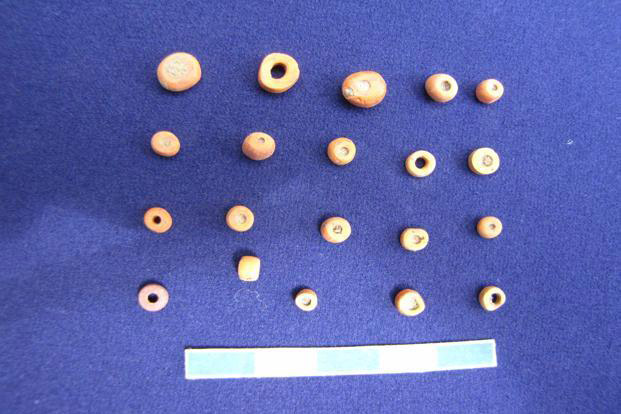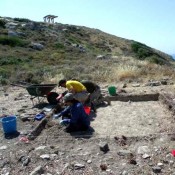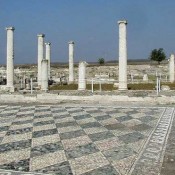Explorers claim they have evidence of a 2,500-year-old planned city—complete with water reservoirs, roads, seals and coins—buried in the city of Tarighat, in the Indian state of Chhattisgarh. Τhe discovery that is being billed as the nation’s biggest archaeological find in at least half a century.
The discoveries were made in Durg district, Tarighat and spanned five acres of a sparsely inhabited region beside a river, according to archaeologists from the state’s department of culture and archaeology.
“As of now, we have four 15ft high mounds around which we have evidence of pottery, coins and some terracotta figures,” said J.R. Bhagat, deputy director in the department. “Once we begin, the entire digging could take at least 5-10 years.”
The 5th and 3rd century BC—to which the Tarighat finds date—points to a period when the region was ruled by the Kushan and Satavahana dynasties in central India. While there have been extensive, previous evidence of urban growth after the first century, such finds are extremely rare for preceding periods.
According to Abhijit Dandekar, an archaeologist at the Deccan College, Pune, “It was the end of the period of the 16 mahajanapadas (loosely translated to great kingdoms) when the Mahabharata was supposedly set, and the beginning of the Maurya empire. There’s very little known about urban structures in this period, in regions spanning modern-day Madhya Pradesh and Chhattisgarh.”
Dandekar, who is not involved in these finds, added that evidence of towns and urbanization spanning five acres was quite significant in an Indian context, though only excavations and peer review would throw true light on the import of these findings.
Until now, the most recent evidence of large-scale town planning in India for a comparable period had been brough to light through excavations at Ahichhatra, in the state of Uttar Pradesh, that began in 1960s. If the Chattisgarh findings were as extensive, then it would be a significant find.
The finds still haven’t been dated using methods such as radiocarbon or thermoluminescence dating but, according to Bhagat, the texture of the pots and the typical pattern of raised mounds pointed to evidence of an urban agglomeration.
“The kind of pottery called the Red and Black Northern Pottery, the coins and other finds at the surface of the site itself show very visible signs of complex urbanization.”
“We’ve just given them permission for this dig, and I think it will be some time before we understand how important this is,” says Arun Raj, a Chhattisgarh-based archaeologist with the Archaeological Survey of India. “But this region, which has been relatively unexplored due to Naxalite conflict, could throw up several such finds.”
He added that one strand of Indian archaeological research sought to find common threads urban lifestyle patterns of the Indus Valley civilization that declined around 1300 BC, to urban formations in central India. “This may possibly falsify or add more credibility to such theories,” he said.




